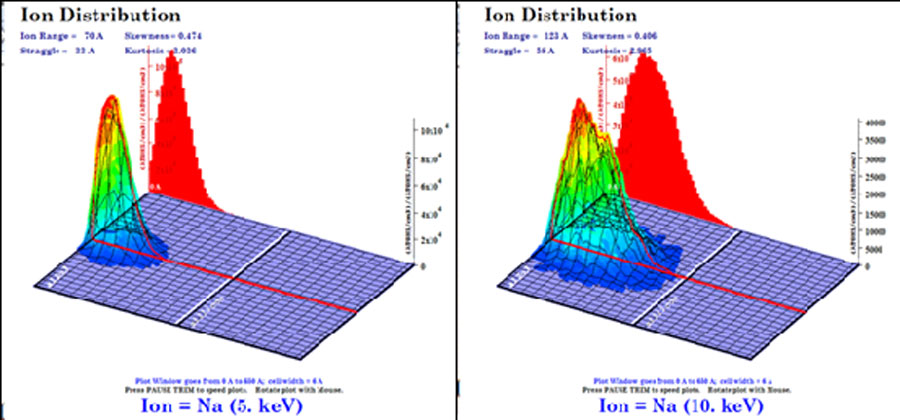


Indian Journal of Science and Technology
Year: 2020, Volume: 13, Issue: 21, Pages: 2111-2118
Original Article
Satyanarayan Dhal1∗, Arpita Patro1, Madhuchhanda Swain1, K Supraja1, P K Rath1
1Assistant Professor, Centurion University of Technology & Management, Odisha, India
∗Corresponding-author:
Satyanarayan Dhal
Assistant Professor, Centurion University of Technology & Management, Odisha, India
Email: [email protected]
Received Date:27 March 2020, Accepted Date:27 April 2020, Published Date:23 June 2020
Objectives: To simulate the Monte-carlo simulation of irradiation of alkali ions (sodium) having very low energy (5 keV and 10 keV) on aluminum oxide micro flakes. Methods/Statistical analysis: We have utilized a simulation process namely SRIM (Stopping of ion ranges in matter), which is based on the binary collision approximation technique. We have fixed our target as an aluminum oxide in the layered structure having a thickness about 65 nm. We have incorporated two different types of ion energy as the input parameters which are normally incident on the targets. We have analyzed ion distributions, recoil distributions, and further ionizations. Findings: The projected average range for 10 keV is significantly found to be higher, almost double than that of 5 keV. The reason behind this increment is due to the high penetration depth because of higher energy. The straggling of 10 keV is higher than that of 5 keV, which is evident from the recoil distribution where the cascade collision has created a large volume of vacancies, which is very high for higher energy. Application/Improvements: This simulation helps us to gather a rich amount of information regarding ion-induced defects, which is highly essential for experiments on aluminum oxide micro flakes. The surface modification after this low ion energy bombardment leads to low detrimental effects which may modify the wetting properties of these flakes
Keywords: Montecarlo simulation; SRIM; Aluminium oxide micro flakes; ion induced defects; BCA
© 2020 Dhal, Patro, Swain, Supraja, Rath. This is an open access article distributed under the terms of the Creative Commons Attribution License, which permits unrestricted use, distribution, and reproduction in any medium, provided the original author and source are credited.
Subscribe now for latest articles and news.